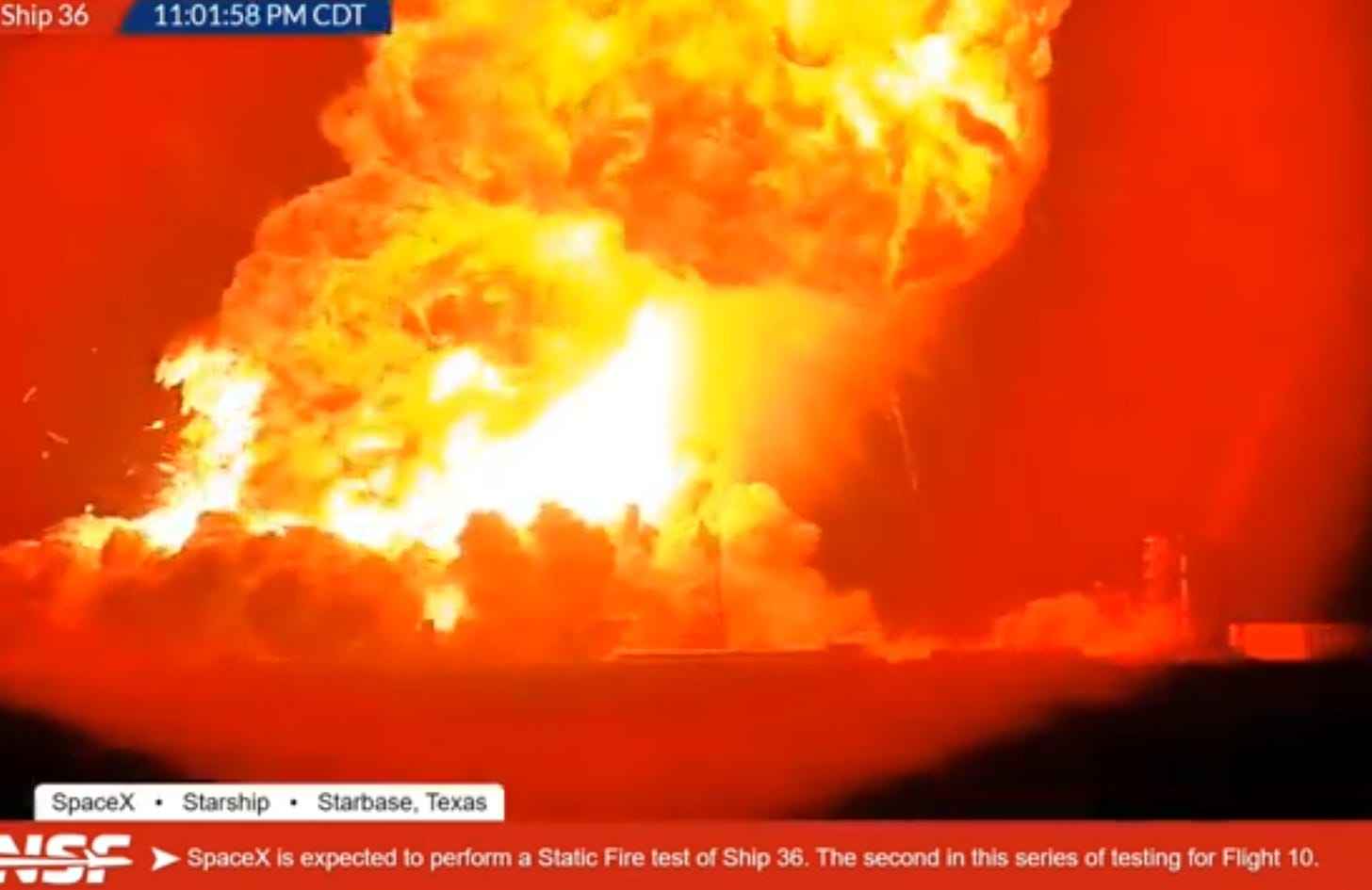Perspective on a Failure
Another Starship lost - is the program in trouble, or can SpaceX bounce back?
SpaceX has lost another Starship, Ship 36, to an accident during a static fire attempt. The vehicle burst, and the was engulfed in a fireball, during the propellant load operation.

There have been a string of failures in the Starship program this year - mostly relating to the new V2 iteration of the ship. The up…


